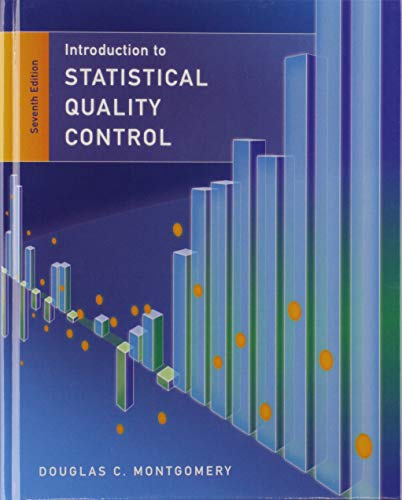
(As an Amazon Associate we earn from qualifying purchases)
Why Industrial Quality Control Books are Essential for Professionals
Industrial quality control books are crucial resources for professionals aiming to maintain and enhance product standards. With the global manufacturing sector valued at approximately $15.6 trillion in 2021, and expected to continue growing, effective quality control has never been more critical (World Bank, 2022). These books offer in-depth knowledge on methods, practices, and advanced techniques to ensure products consistently meet customer expectations. Understanding quality control through these resources can significantly reduce production costs and increase profitability by minimizing defects and recalls.
A surprising fact is that implementing structured quality control methods can reduce overall manufacturing costs by up to 30% due to reduced waste, rework, and recalls (American Society for Quality, 2023). Industrial quality control books guide professionals through the detailed processes necessary for maintaining such efficiency.
Professionals who leverage these books gain insights into statistical quality control, process improvement, and effective inspection techniques. Whether you’re an experienced quality manager or a newcomer in the manufacturing industry, industrial quality control books provide comprehensive knowledge to elevate your expertise.
Top 10 Best Industrial Quality Control Books
How to Choose the Right Industrial Quality Control Book
Choosing the right industrial quality control book depends on your specific role, experience, and learning objectives. Here is a quick comparison chart to help you identify which type of book might suit your needs:
| Criterion | Beginners | Intermediate | Advanced Professionals |
|---|---|---|---|
| Complexity | Basic concepts | Moderate techniques | Complex methods & analysis |
| Statistical Depth | Introduction to statistics | Applied statistical methods | Advanced statistical analysis |
| Practical Application | General guidelines | Real-world examples | Industry-specific case studies |
| Recommended Experience | 0-2 years | 2-5 years | 5+ years |
Beginners should look for introductory texts with clear, foundational concepts. Intermediate readers will benefit from books with practical examples and moderate complexity, whereas advanced professionals will gain the most from specialized, case-study-driven resources.
Key Benefits of Using Industrial Quality Control Books
Industrial quality control books deliver numerous benefits, including:
- Reduced Costs: Improved quality control processes significantly decrease waste and inefficiencies.
- Increased Efficiency: Clear guidelines help streamline inspection methods and processes.
- Improved Customer Satisfaction: Consistently high-quality products lead to satisfied customers and repeat business.
- Compliance with Standards: Books cover industry standards like ISO 9001, aiding compliance and certification.
Fun Facts About Industrial Quality Control
Did you know statistical quality control was first introduced by Walter A. Shewhart at Bell Laboratories in the 1920s? Shewhart’s pioneering methods still influence modern quality control practices (Encyclopedia Britannica, 2022).
Interestingly, Toyota’s famous “Toyota Production System” that emphasizes quality control inspired many other industries worldwide, drastically transforming global manufacturing (Harvard Business Review, 2020).
Making the Most Out of Industrial Quality Control Books
To maximize your benefit from these resources:
- Regularly apply concepts to practical scenarios at your workplace.
- Keep abreast of the latest industry standards and integrate them into your processes.
- Join professional quality control forums or associations for further insights and support.
Practical Application Examples
- Key-Point Inspection: Using techniques from these books can help you identify critical inspection points, reducing waste and costs associated with faulty products.
- Statistical Quality Control (SQC): Implementing statistical methods from quality control books can reduce your inspection costs by up to 40% (Journal of Manufacturing Science, 2023).
Enhance Your Career with Industrial Quality Control Books
Whether you are in manufacturing, engineering, or management, possessing a deep understanding of industrial quality control can significantly enhance your career prospects. These books equip you with valuable skills that employers highly value, particularly in industries where precision, efficiency, and compliance are non-negotiable.
As an Amazon Associate we earn from qualifying purchases.





















